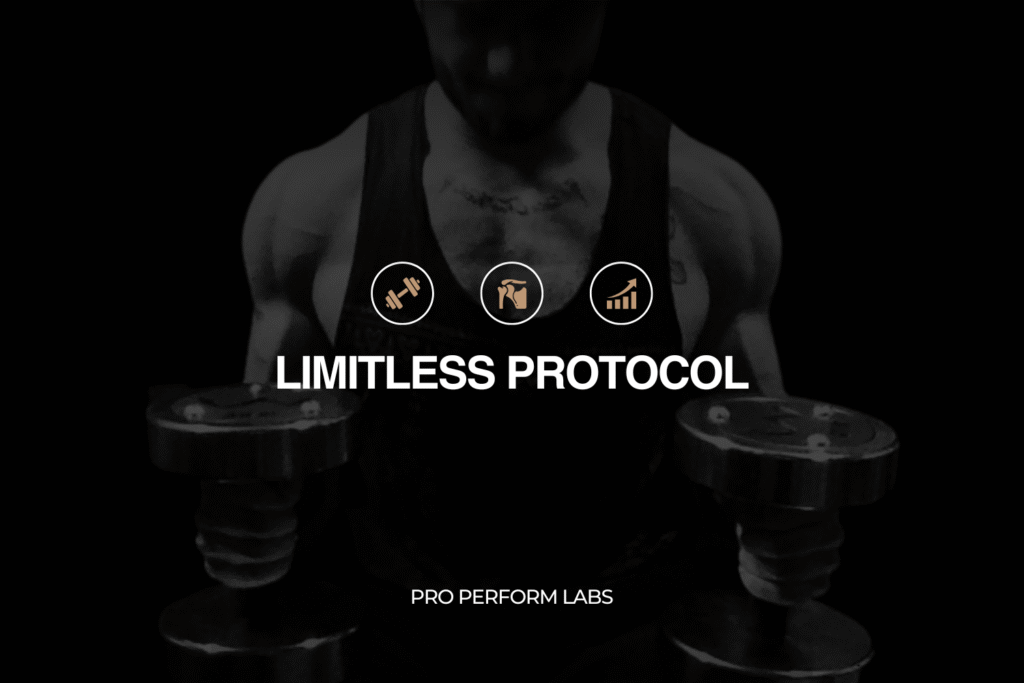If you want to train like the 1%, get elite results FASTER than ever and eliminate niggles / injuries for good…
This letter will show you how.
But first:
We must address the elephant in the room.
Most Programs Suck
This includes online programs, youtube videos… even plans put together by $1000/mo fitness coaches and $150/hour PTs.
Why?
Because these plans are not made for you.
- You’re forced into ill-fitting generic exercises that destroy your potential and waste your time because it takes forever to get results.
- You’re crammed into cookie-cutter training splits and rep / set schemes, leading to niggles that get in the way of your goals.
- You’re squeezed into unnatural positions that feel uncomfortable, violate your structure and get you injured.
I’ve seen this too many times:
#1
”That exercise plan helped my friend add 30lbs to his squat… but it didn’t do the same for me”
#2
”I downloaded a program from [insert influencer here] and hoped to get great results, but got injured instead!”
#3
”I’ve been on and off with PT – I got a bunch of stretching, band work and bodyweight exercises that that didn’t help at all”
#4
”Some of the exercises I do feel crummy as f*ck, so I rush through it because I just want them over and done with!”
#5
”I’ve trained for years but not where I want to be… my shoulders stay weak and small no matter what I try”
I think it’s safe to say…
These cookie-cutter plans are the OPPOSITE of what an elite training plan should look like.
So… how do you build a plan that:
- Gives you maximal results in minimal time
- Feels amazing and is always enjoyable
- Minimises your injury risk
There are 4 specific pillars…
We’ll explore them together at the end of this letter.
But first I want to tell you the most powerful lesson I’ve learned from a decade of building custom plans…
I first learned this lesson when I got injured – because I forced my body into a plan that didn’t fit.
But the lesson has since been reinforced through $10’000s on education, 100’s of in-person sessions, 1150+ of my own workouts and countless hours working with clients on all sides of the globe.
Here it is…

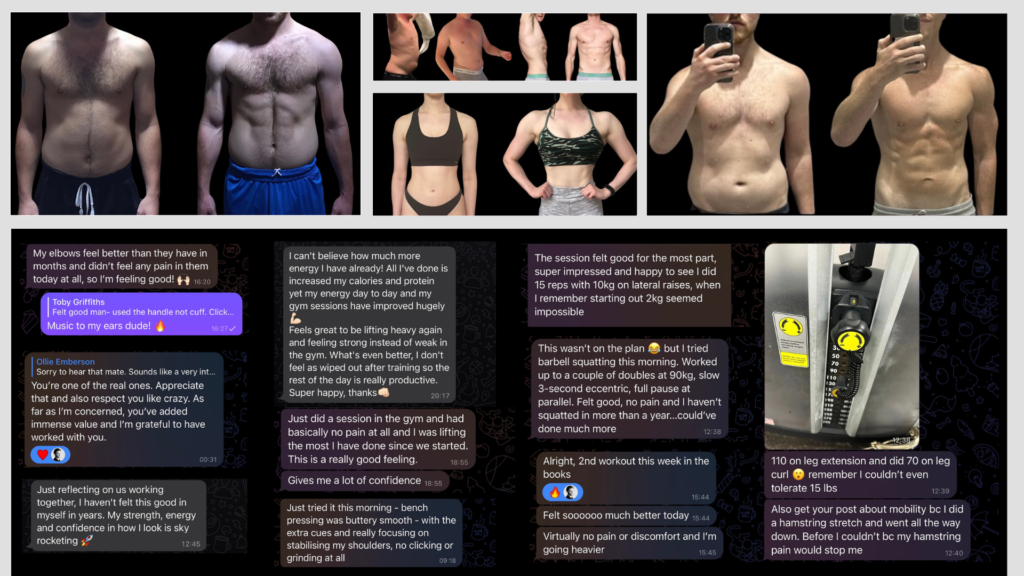
No two people move the same. You are unique, and every aspect of your workouts should be too.
Fact is, most plans are not unique to the individual.
And this is why they end up:
- Haunted by niggles and nagging pains
- Doing exercises that feel crummy
- Suffering with overuse injuries
- Stuck with mediocre results
And you don’t want that… because it’s very hard to continue training when you 1) don’t enjoy it, and 2) don’t get the positive reinforcement through decent progress.
To prevent the above…
You must avoid generic cookie-cutter plans like the plague, and instead – customise your workouts to the best of your knowledge and ability.
That’s precisely what this letter is about…
Creating a Custom-fit Plan
But before I tell you the 4 pillars that make up a bespoke plan – what’s the difference between a “cookie-cutter” plan… and a “custom-fit” plan?
I’ll explain with a clothing analogy:
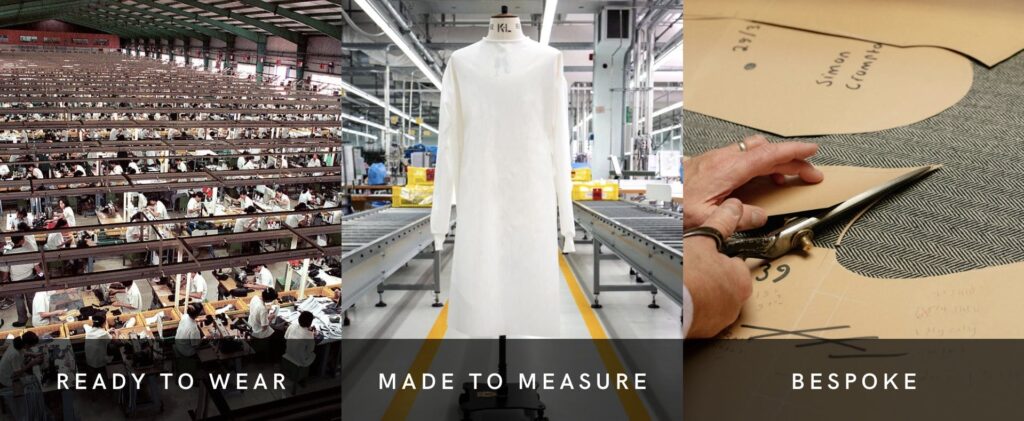
L E V E L 1
Ready To Wear
This is the definition of “cookie-cutter”. Made with a pre-existing template. All items are identical. Production quantities are VERY high and churned out to maximise as much profit as possible.
Made by machine in a factory.
How it works: You walk in, pick it up off the rack and put it on.
How it fits: It might fit you by chance. It might fit you right in the shoulders, but not at your waist. Or perhaps, it won’t fit you at all.
Applied to training: This is 99% of plans. You’re using the same plan 1000s of other people have downloaded or received. The split doesn’t fit you. The rep / set scheme doesn’t fit you. The exercises don’t fit you.
Best case? Shitty results.
Worst case? You get injured.
L E V E L 2
Made To Measure
Starts with a pre-existing ready to wear template, but you can choose the cloth and make changes or tweaks in the fit.
Made by machine in a factory.
How it works: You walk in, choose from 500 fabrics, and have 3-5 measures done. The item arrives 4 weeks after and you take it home.
How it fits: Fits better than ready to wear, but obvious it’s not made for you.
Applied to training: This is 5% of plans, and what most good coaches offer.
And it is a hybrid between level 1 and level 3. Exercises are chosen based on your goals (but not 100% effective because they are not adjusted to your body)… and the plan is adapted to your schedule.
This means slightly better results, and lower injury risk…
But we’re not quite there…
L E V E L 3
100% Custom-fit
Bespoke. Custom-made. A one-off unique piece. Garments are built around your body, needs and lifestyle.
Made with precision, by hand, in a small atelier.
How it works: You walk in, choose from 5000 fabrics. Have 30+ measures done. Your unique pattern is drawn by hand from scratch. You have 3-5 fittings and adjust every aspect of the garment so it fits perfectly.
How it fits: It fits perfectly everywhere, and know you look your best.
Applied to training: This is 0.001% of plans. The split and rep / set scheme is built around your tolerance (what you can handle), and the exercises are built to your anatomy, unique range of motion, and your goal.

Want superior results?
THIS is what you want.
The Opportunity: A custom-fit plan will make workouts feel amazing. You won’t get any haunting niggles, injuries will be minimal and you’ll achieve incredible results faster than ever.
Case in point: Ben

The problem(s):
First, the industry is full of unqualified people who lack the knowledge to create truly customised plans that start with (and are built around) the individual.
Most fitness coaches…
Even those who charge $1000s per month: Think “custom” means a “unique” selection of generic exercises with a “special” rep range suited to your schedule.
As you read the comparison above:
You now know this is NOT custom.
And issue two, once or IF you actually manage to find someone who has the specialised knowledge to create custom plans, those plans will demand bespoke prices.
Until now.
It’s my goal with this email, and the coming emails, to educate you on what a custom-fit plan is, and what goes into it, so you can build one for yourself without spending thousands of dollars.
So my friend:
Before I tell you the 4 pillars of a custom plan, here’s a quick recap of what we’ve learned so far in this letter…
- Most generic workout plans suck because they are not made for you.
- Best case: these cookie-cutter plans will waste your time, and worse case, they’ll get you injured.
- No two people move the same – you are unique and your workouts should be unique too.
- There are 3 levels of workout customisation: Ready to wear, made to measure, and custom-fit (bespoke)
- A custom-fit workouts feel amazing, produce elite results in minimal time, and reduce your injury risk.
Got it? Good. Let’s cover the 4 pilars of a custom-fit plan.
4 Pillars Of A Custom Plan
My goal right now is to introduce you to these 4 pillars, but we won’t go into a lot of depth (because it’s a long email already).
Instead, I’ll give you an overview:
And ONE example of each from my own experience.
Just know that the next few emails you get will go into much more detail on each of these points.
P I L L A R 1
Starting Structure
Your anatomy affects how you move and what muscles are challenged during certain movements. A failure to understand your anatomy / structure will mean mediocre results.
An example: When I started training – I couldn’t grow my quads no matter how many squats I did. But my ass? It got massive.
Why: My leg length, torso length and how I fold up meant the squat was a HIP exercise – so I needed to either do something else, or alter the exercise to get the results I wanted.
Ps. Hip dominant squats look like this:
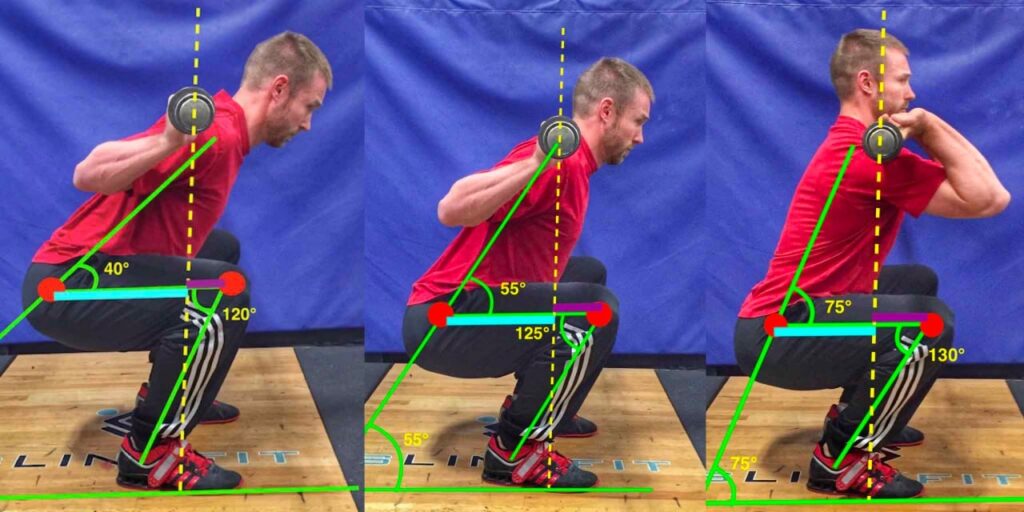
P I L L A R 2
Range Of Mobility
“Full ROM” should not be standardised. Your range of motion is unique, and you must RESPECT it when you train. You will get injured if you are pulled further than what your body can handle.
An example: Chins ups always felt terrible to me. But I couldn’t work out why. It got so bad, I’d sometimes have to stop training.
Why: I have a “type 3 acromion” which makes it impossible for me to get my arms vertical. Once I adjusted the exercise to fit my individual ROM – the pain and discomfort disappeared.
Ps. Hope this visual helps 👇
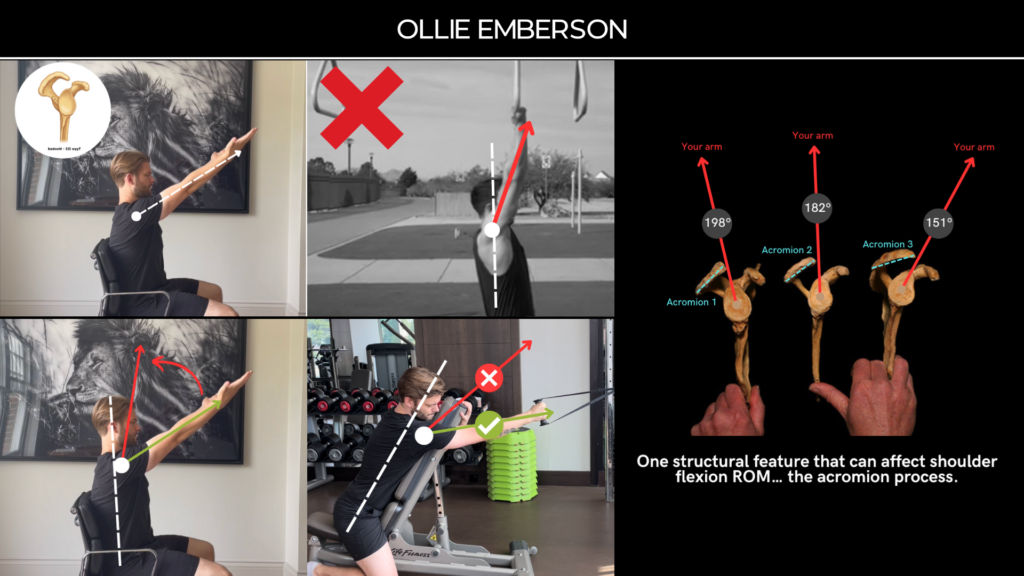
P I L L A R 3
Program Design
This is the easiest point – you must build your parameters (frequency, split, set / rep scheme) around your schedule, what you can handle, and what you can stick to.
An example: I spent years training high volume 5x/week. I thought more = better. But my niggles and lack of results said otherwise.
Why: I’d just recovered from a shoulder injury and couldn’t handle lots of volume. And as soon as I switched to low volume sessions 3x/week, this happened 👇

P I L L A R 4
Exercise Design
Assuming you understand structure and mobility, this is where you build exercises around your body to 1) make them feel incredible, 2) make them as effective possible, and 3) reduce injury risk.
An example: I hate dumbbell lateral raises. They feel crummy as f*ck. They encourage you to “cheat”. And they’re inefficient.
Why: Even if you use “full ROM”, they only challenge your delts in the top range. so you need to use another exercise to challenge them in the bottom range.
Use cables instead to save time & build shoulders like this👇
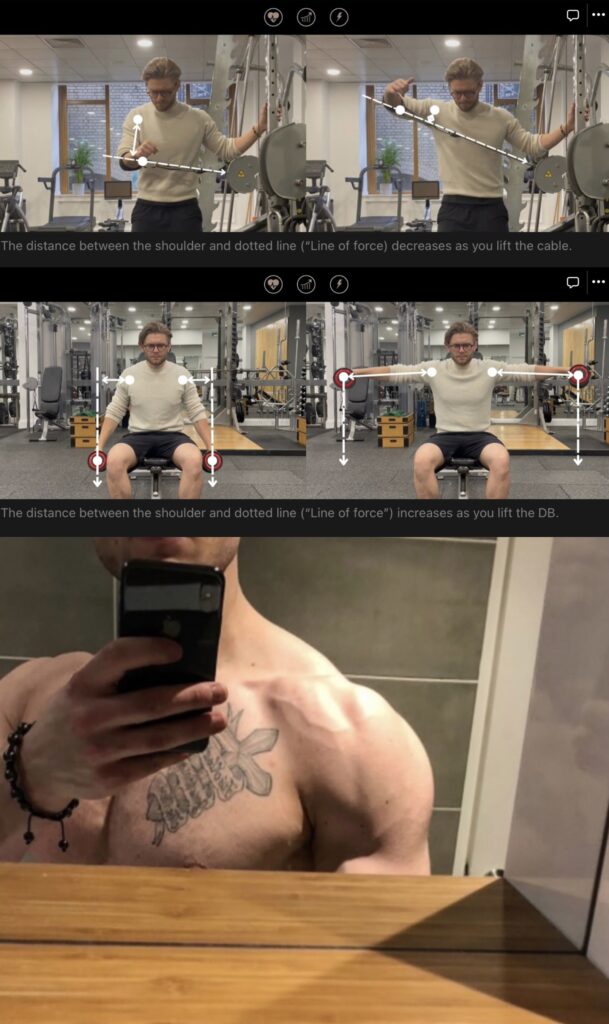
Fin.
Hope you found this email useful?
A long one – I know. But I hope it’s set the foundations – and your expectations – for what’s in store for you over the coming weeks.
I want to ensure you can build workouts that:
- Achieve elite results in minimal time
- Make workouts feel incredible
- Stop you getting injured
Before I map out the first pillar (structure), I want to show you 4 things that will destroy your progress in the gym.
So stay tuned, because next Saturday you’ll get an email called:
The 4 Destroyers Of Gym Progress.
Have a great weekend 🙂
— Ollie E.



